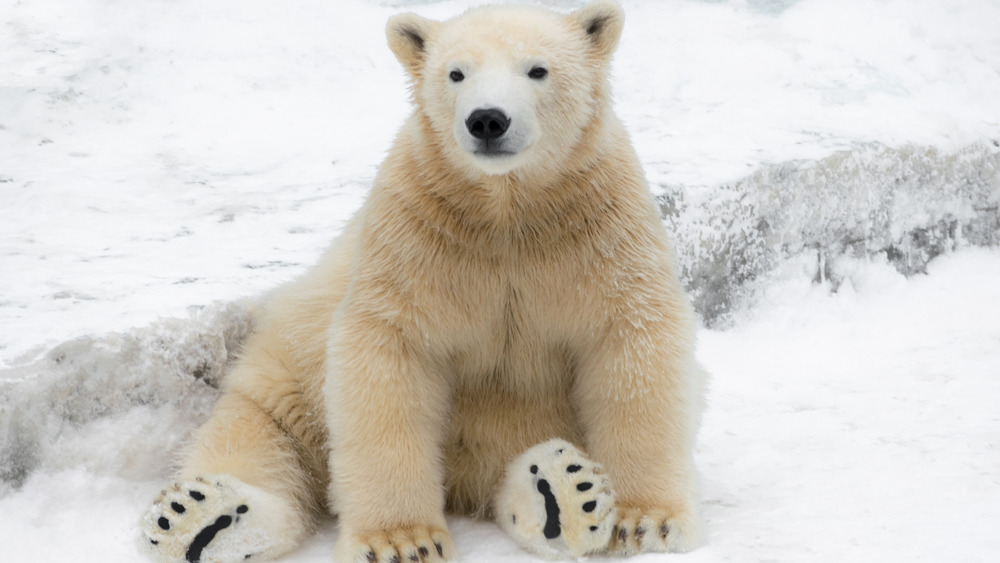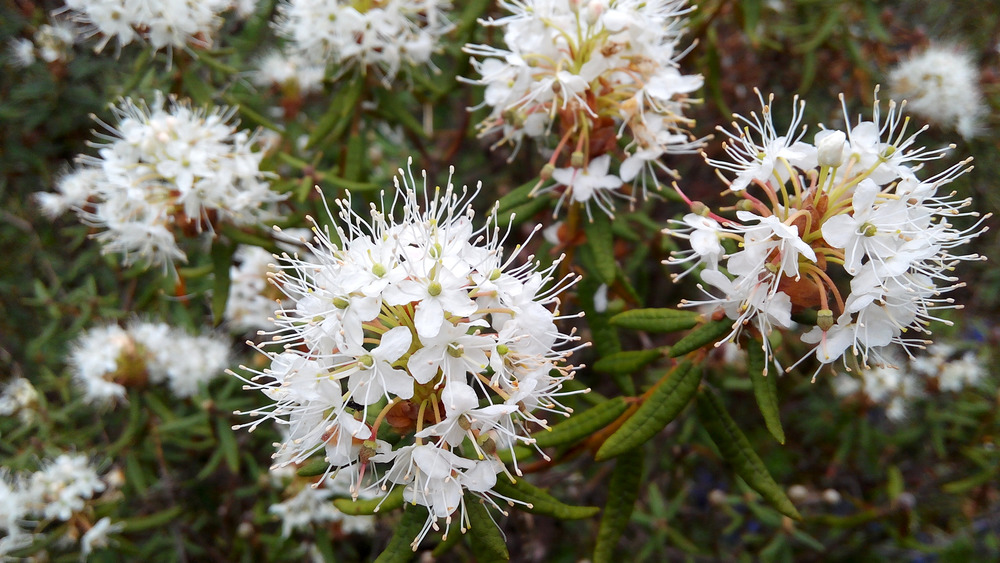This Is How The North Pole Smells
Who among us hasn't looked at photographs of the ethereal, sweeping North Pole and wondered what it's like to be there? What would it feel like? What would it look like in person? What would it ... smell like?
It turns out that like most places on earth, the answer depends on one's immediate surroundings. If you find yourself really close to a polar bear or a polar bear's relatively recent tracks, you're probably a) terrified and b) smelling something really bad. According to USA Oceana, polar bears have very pungent feet, as discovered by a group of scientists from the Institute for Conservation Research at the San Diego Zoo, Polar Bears International, and the U.S. Geological Survey, in 2014.
Researchers took samples of the scents left in the tracks of 203 wild polar bears living near the Beaufort Sea or the Chukchi Sea in the Arctic Ocean and shared them with polar bears living in zoos. Findings showed that the zoo-dwelling bears preferred the scents wild bears left in spring as well as the scents of the opposite sex. Male bears responded particularly favorably to the scents from female bears in heat. The scientists also examined polar bears' feet and found prominent sweat glands in two of the females' paws that resembled other mammals' sweat glands that transmit information about territories as well as reproductive and sexual statuses. Polar bears may also tread urine into their tracks to mark their territories. Smelly polar bear feet are doing some pretty complex communication work.
Flowers, fires, and slumps, oh my
What about the rest of the North Pole beyond the polar bear tracks? When British explorer Antony Jinman took on the question about how the North Pole smells from Canadian Geographic, he responded that he could taste the salt from the ocean in the air, but he either found the cold air odorless or couldn't smell anything through his frozen nostrils. This was not the case for members of Team Shrub, a group of ecologists from the University of Edinburgh, Scotland, who "work at focal research sites in Northern Canada and conduct data syntheses at tundra biome and global scales."
In a blog entry from 2017 about "Arctic smellscapes," Team Shrub described the fragrant flowering plant Ledum palustre (pictured above) bringing "a bit of freshness like a fine perfume into the stale mosquito-ridden air." The glut of mosquitoes requires "layers and layers of mosquito repellent," the chemical smell of which "is now associated for us with a major sense of relief." Finally, Team Shrub reports smelling far-off forest fires carried on the wind and "the strong and very distinct smell of slump" — landslides which, per Nature, are "caused by the melt of ground ice in permafrost." Team Shrub describes the smell of slumps as "like freshly turned earth, like rotting compost, but stronger, and different in a way that is hard to pin down."

